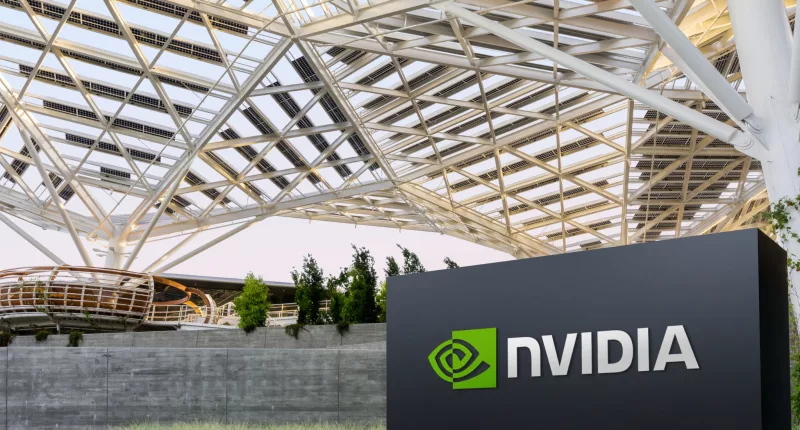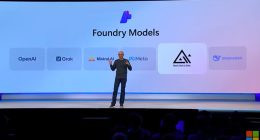Chipmaking giant Nvidia eased the fears of a potential AI bubble after posting quarterly results that exceeded already stretched forecasts. The world’s most valued publicly traded company reported third-quarter revenue of $57.01 billion, up 62% from a year earlier and above analysts’ estimates of roughly $54.9 billion. Adjusted earnings were $1.30 per share, topping the $1.25 consensus. Net income surged 65% to $31.91 billion for the period as well.
Nvidia projected fourth-quarter revenue of about $65 billion, well ahead of the $61.66 billion analysts had anticipated. Shares jumped more than 4% in extended trading after a 3% gain earlier in the day, providing relief to a market that has been rattled by questions about whether AI-driven capital spending is sustainable. Currently, the company’s GPUs underpin the compute clusters used by nearly every major AI developer and cloud provider, including Microsoft, Amazon, Google, Meta, Oracle and OpenAI. With a market value of roughly $4.5 trillion, Nvidia’s results influence not only the semiconductor sector but also broader sentiment toward tech valuations.
Huang said demand for the company’s new Blackwell architecture—particularly the GB300 Blackwell Ultra chips—was “off the charts,” and that cloud GPUs were “sold out” across providers. Nvidia also reiterated that compute requirements for both training and inference continue to climb at a compounding pace as companies deploy increasingly sophisticated foundation models and agentic applications. One blemish in the quarter was China. The US export restrictions barred Nvidia from shipping its most advanced Blackwell chips to the region. Although the company received licenses for the H20, a down-spec alternative, Kress said revenue from the chip totaled only $50 million.
Nvidia’s data center division, the engine of its AI business, generated $51.2 billion in revenue, up 66% year-over-year and above the Street’s ~$49 billion estimate. The company said $43 billion came from compute products—chiefly GPUs—while $8.2 billion came from networking hardware that links thousands of chips together in large clusters. Finance chief Colette Kress said Blackwell Ultra is now the company’s best-selling chip family, overtaking earlier versions of the architecture. She added that Nvidia has visibility into more than five million GPUs’ worth of announced AI factory and infrastructure projects, spanning cloud hyperscalers, national governments, industrial conglomerates and supercomputing centers. Gaming revenue reached $4.3 billion, up 30% from a year earlier. Professional visualization sales rose 56% to $760 million, aided by demand for DGX Spark, Nvidia’s AI-focused workstation. The smaller automotive and robotics segment brought in $592 million, up 32%.
Nvidia’s financial report comes at a time when concerns over AI valuations had helped pull the S&P 500 lower for four consecutive days, with investors questioning whether tech giants would continue spending heavily on AI hardware. Microsoft, Alphabet, Amazon and Meta recently raised their capex forecasts to a combined $380 billion for 2025, largely directed at data-center buildout, intensifying scrutiny of whether the returns will materialize. Nvidia’s results—and its guidance—suggest the build cycle is far from peaking, though. In addition to this, the company repurchased $12.5 billion of its own stock and paid $243 million in dividends. Huang said Nvidia has $500 billion in AI chip orders already booked for 2025 and 2026, and Kress noted that number will “probably” grow as additional deals are finalized.
The Tech Portal is published by Blue Box Media Private Limited. Our investors have no influence over our reporting. Read our full Ownership and Funding Disclosure →






